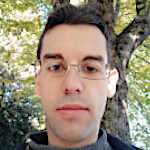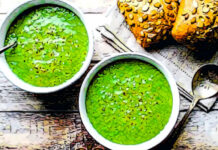The European Commission has launched the EU4Algae platform to promote the production and consumption of algae and microalgae. (1)
Innovation and sustainable development find in the Blueconomy an ideal setting for planetary nutrition and ecosystem services. Some insights to follow.
1) Algae and microalgae, premise.
1.1) A sea of opportunities
Algae and microalgae offer great opportunities in various productive sectors:
– in foods and dietary supplements, drugs and cosmetics one can treasure essential nutrients (protein, marine Omega-3, carbohydrates, dietary fiber), micronutrients (vitamins and minerals) and phytocomplexes of high health value, (2)
– in feeds, special mixes of algae and microalgae and florotannins make it possible to reduce and eliminate the use of antibiotics (e.g., Algatan). Some macroalgae can also lower methane emissions from ruminants,
– in agriculture, algae and microalgae can be usefully employed both as biostimulants, to reduce inputs and increase yields, and more importantly to strengthen plants and protect them from pathogens (as has been shown with Algatan on Xylella-affected olive trees),
– Biofuels, bioplastics, textiles.
1.2) Ecosystem services
Algae and microalgae also lend themselves to providing valuable ecosystem services:
– CO2 absorption. The oceans are estimated to absorb about 2.8-2.9 bn t CO2/year, more than 25% of its anthropogenic atmospheric emissions. (3) The rapidity and ability of macroalgae to develop and sequester CO2 is complemented by the prospect of Carbon Capture and Utilization (CCU) by microalgae, (4)
–Bio-decontamination ofwater and wastewater from heavy metals and other toxic substances (including pesticide residues and other agrochemicals), through microalgae
– Regeneration of marine ecosystems by aquaculture of algae and shellfish.
2) Algae and microalgae, production and consumption in the EU.
2.1) Blueconomy
Algae, microalgae and spirulina production facilities in the European Union are experiencing continued growth. 447 production facilities in 23 member states (Araujo R. et al., 2021). Macroalgae are fished, in 68% of plants, as well as cultivated. Cultures of seaweed, microalgae and spirulina are conducted by the various methods available. In the open sea,open ponds (open ponds) and photobioreactors. (5)
The Blueconomy features France, Ireland and Spain in terms of the number of macroalgae production units, and Germany, Spain and Italy in terms of microalgae. And again, France, Italy, Germany and Spain for spirulina. A map of plants in different EU countries is available on the European Atlas of the Seas. (6) Biomass in the EU is still mostly for food and nutraceutical applications.
2.2) Algae and microalgae consumption.
Products referring to the presence of algae and microalgae continue to grow, thanks in part to the superfood idea that they, in their own right, inspire in consumers. In food supplements but also in commonly used foods. (6) The EU research projects #ProFuture(Proteins for the Future), #NextGenProteins and #SEAFOODTOMORROW, in Horizon 2020, are working to optimize the production of microalgae and enhance the benefits–for the environment and health–associated with their use. (7)
Food applications have extraordinary growth potential. Starting with kombu seaweed (or kelp, the queen of red algae), as a vegetable but also in ready meals and plant-based foods. Chlorella has been successfully tested-revealing nutraceutical and technological functions-on cookies and breadsticks, yogurt and cheese. Along with spirulina, in the ProFuture project, also on vegetable creams, (8) filled pasta and protein bars.
3) EU4Algae
EU4Algae is the platform organized by the European Commission ahead of adedicated initiative on algae and microalgae, expected by the end of 2022. With the aim of encouraging their consumption and the Bioeconomy that can contribute to the development of sustainable food systems:
– operators can receive up-to-date news on production and trade scenarios, as well as funding opportunities in the macro contexts of
EU Green Deal
,
Next Generation EU
, Horizon Europe,
– operators in the food supply chain (processing, distribution, catering) and consumers themselves will be able to find stimuli for the use of algae and microalgae in the preparation of healthy and tasty foods.
4) #TasteTheOcean
Great international chefs have been called to the stove to share with the general public-thanks to the Taste The Ocean initiative (9)-tasty recipes that are both tasty and helpful in protecting marine resources, animal welfare, and the planet:
– Neglected fish, already endorsed with flying colors in the #SEAFOODTOMORROW project and also celebrated on this site, as #poorimabuoni, (10)
– Complementary seaweeds, such as delicious sea vegetables. Such as brown kombu seaweed, which Chef Rui Paula offers along with monkfish. This and other recipes are available in several languages, including Italian. (11)
5) Interim Conclusions
The development prospects of the Blueconomy are extraordinary. Algae and microalgae aquaculture is one of the emblems of the circular economy and can make an important contribution to achieving the Sustainable Development Goals (#SDGs) in UN Agenda 2030.
Research and development may make it possible to expand the range of microalgae available for human consumption, while complying with the albeit strict EU Novel Food regulations already referred to. (12) And it is therefore essential to share know-how, including in a logic of open innovation.
#SDG2(End Hunger), #SDG3(Good Health and Wellbeing), #SDG12(Responsible Consumption and Production), #SDG14(Life below Water), #SDG15(Life on Land).
Dario Dongo and Andrea Adelmo Della Penna
Notes
(1) Directorate-General for Maritime Affairs and Fisheries. European Commission launches platform to promote production and use of algae in Europe. European Commission. 9.2.22, https://ec.europa.eu/oceans-and-fisheries/news/european-commission-launches-platform-promote-production-and-use-algae-europe-2022-02-09_en
(2) Daniela Gabbia, Stefano Dall’Acqua, Iole Maria Di Gangi, Sara Bogialli, Valentina Caputi, Laura Albertoni, Ilaria Marsilio, Nicola Paccagnella, Maria Carrara, Maria Cecilia Giron, Sara De Martin (2017). Phytocomplex of Fucus vesiculosus and Ascophyllum nodosum controls postprandial plasma glucose levels: an in vitro and in vivo study in a mouse model of NASH. Marine Drugs 2017, 15, 41. doi:10.3390/md15020041
(3) Watson, A.J., Schuster, U., Shutler, J.D. et al. (2020). Revised estimates of ocean-atmosphere CO2 flux are consistent with ocean carbon inventory. Nat Commun 11, 4422 (2020). https://doi.org/10.1038/s41467-020-18203-3
(4) Ehsan Daneshvar, Rebecca J. Wicker, Pau-Loke Show, Amit Bhatnagar (2022). Biologically-mediated carbon capture and utilization by microalgae towards sustainable CO2 biofixation and biomass valorization – A review. Chemical Engineering Journal. https://doi.org/10.1016/j.cej.2021.130884
(5) Araujo R. et al. (2021). Current Status of the Algae Production Industry in Europe: An Emerging Sector of the Blue Bioeconomy. Front. Mar. Sci. 7:626389, https://doi.org/10.3389/fmars.2020.626389
(6) European Commission. European Atlas of the Seas. https://ec.europa.eu/maritimeaffairs/atlas/maritime_atlas/
(7) Dario Dongo, Andrea Adelmo Della Penna. Incorporating seaweed into the diet, a promising scenario for health and the planet. #SEAFOODTOMORROW. GIFT (Great Italian Food Trade). 18.1.22, https://www.greatitalianfoodtrade.it/innovazione/inserire-le-alghe-nella-dieta-uno-scenario-promettente-per-la-salute-e-il-pianeta-seafoodtomorrow
(8) Dario Dongo, Andrea Adelmo Della Penna. Adding microalgae to vegetable creams, ProFuture. GIFT(Great Italian Food Trade) 3.11.21, https://www.greatitalianfoodtrade.it/innovazione/aggiunta-di-microalghe-alle-creme-vegetali-profuture
(9) European Commission. #TasteTheOcean. https://europa.eu/taste-the-ocean/index_it
(10) Loredana Spagnardi, Dario Dongo and Alessandra Mei. #poormabuoni. Savings and health in oily fish. GIFT (Great Italian Food Trade). 5/14/20, https://www.greatitalianfoodtrade.it/consum-attori/poverimabuoni-risparmio-e-salute-nel-pesce-azzurro
(11) European Commission. Anglerfish in its habitat. https://europa.eu/taste-the-ocean/sustainable-seafood-recipes/anglerfish-its-habitat_en (recipe also available in Italian).
(12) Dario Dongo, Giulia Torre. Microalgae for food use and Novel Foods regulation, the state of the art in the EU. GIFT(Great Italian Food Trade). 29.1.22, https://www.greatitalianfoodtrade.it/progresso/microalghe-per-uso-alimentare-e-disciplina-dei-novel-foods-lo-stato-dell-arte-in-ue









